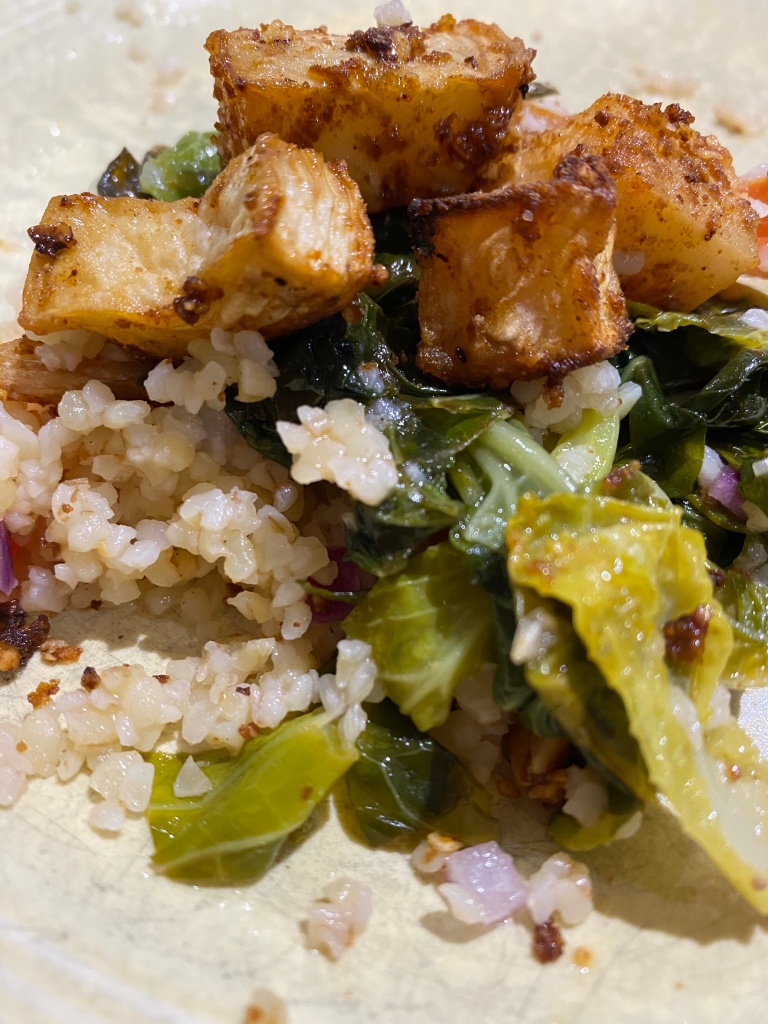
It’s not secret that we are big fans of Ruby Tandoh’s. We reviewed her first two cookbooks, “Flavour: Eat What You Love” and “Crumb” back-to-back in early 2017. Spoiler alert: We loved them both. More spoilers: We loved “Cook As You Are” too.
We loved Ruby’s first two cookbooks for the same reason we loved this one: it’s well written with delicious recipes requiring a range of skills– from novice to expert. She writes lyrically, so it seems as though she’s standing next to you in the kitchen, telling you what you need to do.
This cookbook is different from her previous efforts in two crucial respects: First, there are no photographs of the food, only illustrations; and Second, the book feels much more global in its outlook. Both make for a refreshing change from the majority of cookbooks we review here and also own.
Don’t get me wrong– I love looking at the photographs of the finished dishes, and sometimes, those photos can be very helpful as they give a guide to what I should be trying to accomplish. Ruby wrote in the introduction that she didn’t want to include photos in this cookbook because photos can be limiting and “Such photos can also end up feeling aspirational, drawing us towards the often-unattainable shiny and new.” I’d like to think with this comment she speaks not only of cookbook photos, but also the many beautiful photos that can fill our social media feeds, making us feel inadequate, whether it’s food or holidays or anything else. It’s worth keeping in mind.
The global outlook of this cookbook allowed me to cook from cuisines I hadn’t cooked before, which I very much enjoyed. These micro-doses of international fare allowed me to cook Nigerian one night, Filipino on another and Japanese on yet another. This global food view and the straightforward recipes that went with it were very refreshing. Ruby excelled at providing suitable substitutions for some of the more unusual ingredients, which meant I didn’t end up with any half-full bottles of some exotic condiment in the back of my refrigerator, never to be used again (hello, my old friend pomegranate molasses).
Ruby also has a wide array of vegetarian and vegan recipes, which we appreciated very much over here as we move away from Meat Free Mondays to Meat Free Every Other Day. (We are trying. We don’t always succeed, but we’re getting better.)
Another brilliant book by Ruby Tandoh. Highly recommended to novice cooks, expert chefs, and everyone in between.
Overall Grade (A- F): A* (Maureen)
Best recipes: Hard to pick one, so my top three are: Marbled Chocolate and Almond Cake, Tingalong Manok and Orange, Olive Oil and Black Pepper Cake
Grade for Photography (A-F): Nothing to grade! High marks for using illustrations, which was novel and still could be instructive when needed.
Any disasters? (Kirstin and Maureen) No. Not only did everything work, but they were, to a recipe, delicious.
Bookshelf or Charity Shop Donation? High-rotation bookshelf. I expect I’ll continue to cook from this in February (and March and April and May and June).
Would you give this to a friend? (Maureen) Absolutely.







